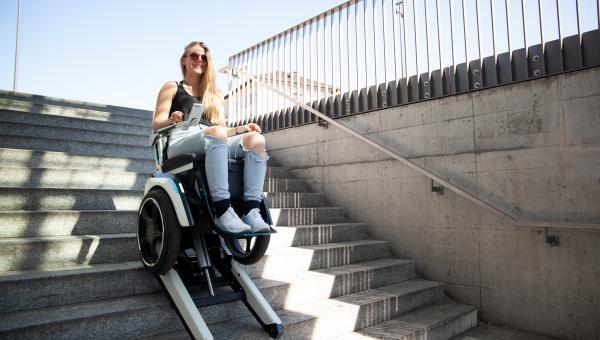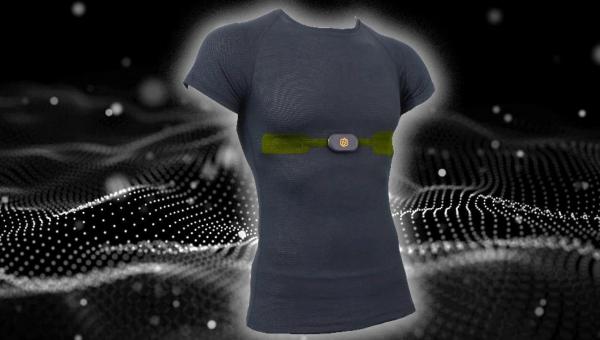Technology that moves you
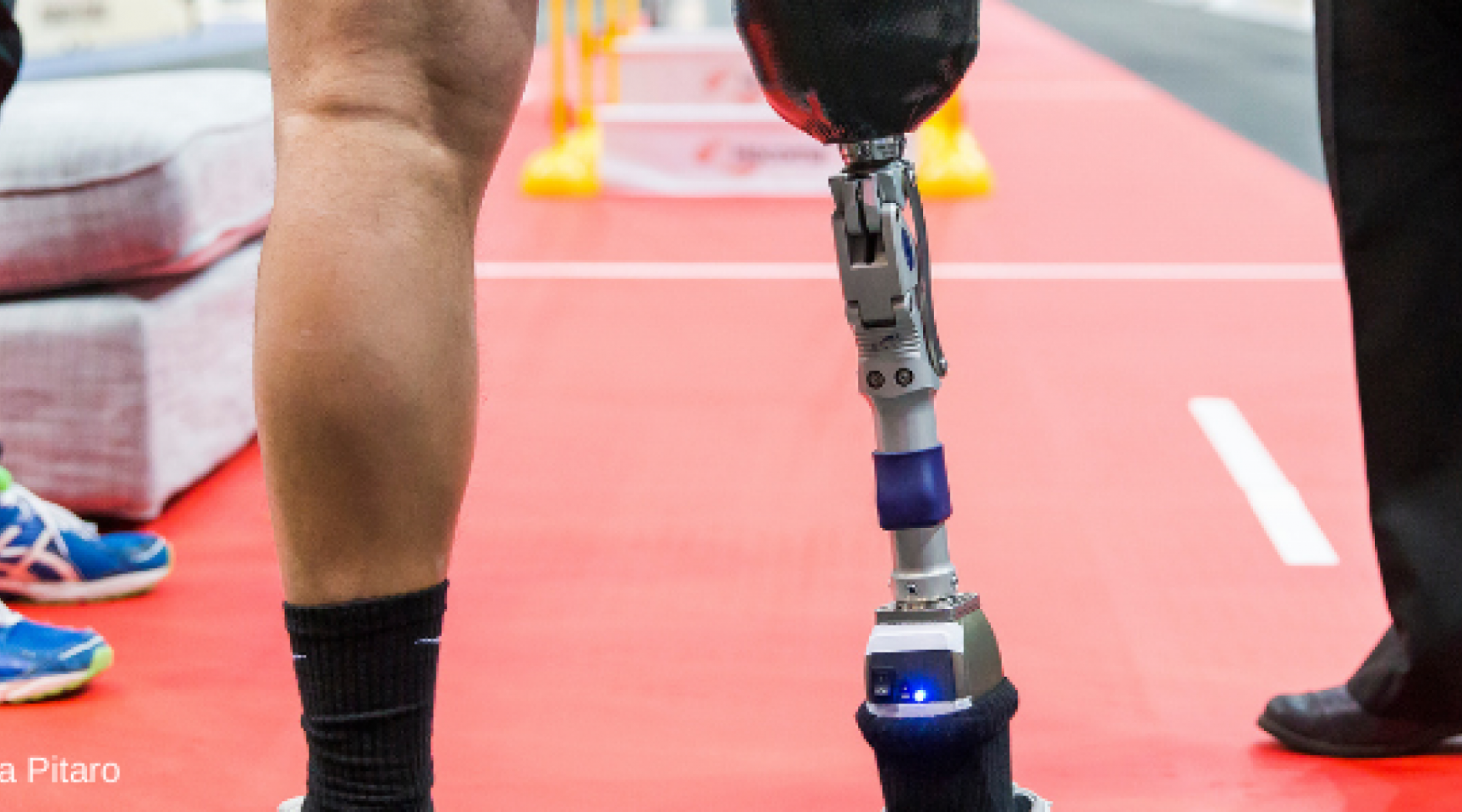
Getting up off the sofa, climbing stairs, slicing bread or changing a light bulb: everyday tasks like these can be a real obstacle for people with disabilities. Assistive technologies are there to help with such day-to-day challenges, but that's not all. Some people are even taking it to championship level – like the ETH Zurich international 'cybathlon', a rather unique competition.
At the cybathlon, people with physical disabilities compete against each other to complete everyday tasks using state-of-the-art assistive devices. In contrast to the Paralympics, for example, cybathlon participants are actually assisted by the latest in robot technology. What's important is the interaction between the person and the device they're using. This means that it's always the person who should be in control and is the reason why cybathlon participants are called pilots.

Where did the idea for a cybathlon come from? Millions of people with disabilities use technical assistance systems every day. But the technologies don't always have a lot of practical application, so they don't get used. This is where the cybathlon comes in. In order to find feasible solutions to everyday situations that really meet people's needs, it aims to drive research and development in this field by bringing together technology developers with the very people they are trying to help.
The cybathlon is the brainchild of Professor for Sensory-Motor Systems Robert Riener at ETH Zurich:
We want to raise awareness about the challenges people with physical disabilities face every day. That's what the cybathlon does. It's our way of contributing to greater inclusiveness.
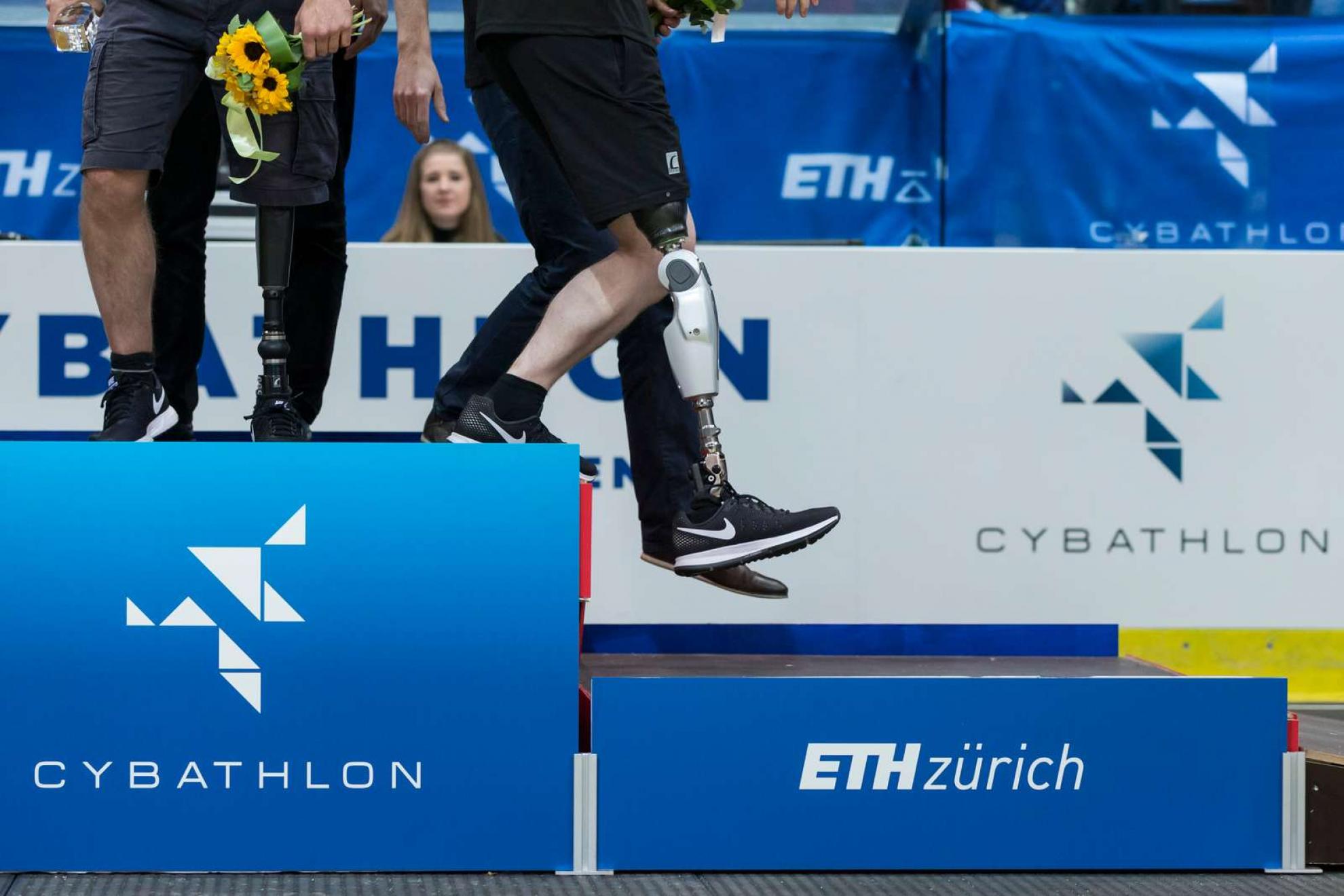
From Cleveland to Tokyo
Following on from the success of the first ever cybathlon, which was hosted by Switzerland in 2016, a second edition is being rolled out this year. Because of the current COVID-19 pandemic a new global format has been designed for this year's cybathlon, which will run from 13 to 14 November. This means that instead of appearing side-by-side in Zurich the pilots and their developer teams will be setting up the required infrastructure in their own countries and competing from there. The races will be filmed under the supervision of cybathlon officials and broadcast live from Zurich at www.cybathlon.com. And there'll be plenty to keep you hooked. From Cleveland to Paris, Göteborg, Moscow, Hong Kong and Tokyo, over 50 teams from 30 locations will compete to demonstrate what they've achieved together over the last few years.
Crossing the finishing line – with a wheelchair or with your mind
Each team is made up of a pilot (who has a disability) and a technology developer from a university of applied sciences or a tech company. Around 70% of the teams have a university background, the other 30% come from the business sector. Teams compete against each other in one of the six disciplines on offer at the cybathlon. The finishing time is not the main factor, however. What's most important is that they complete the task properly and safely.
- In the virtual races, cars are driven by pilots paralysed from the neck down using brain signals. The specially developed computer game uses a brain-computer interface (BCI), a technology that aims to help people with reduced mobility to control a computer or wheelchair, for example, with their mind.
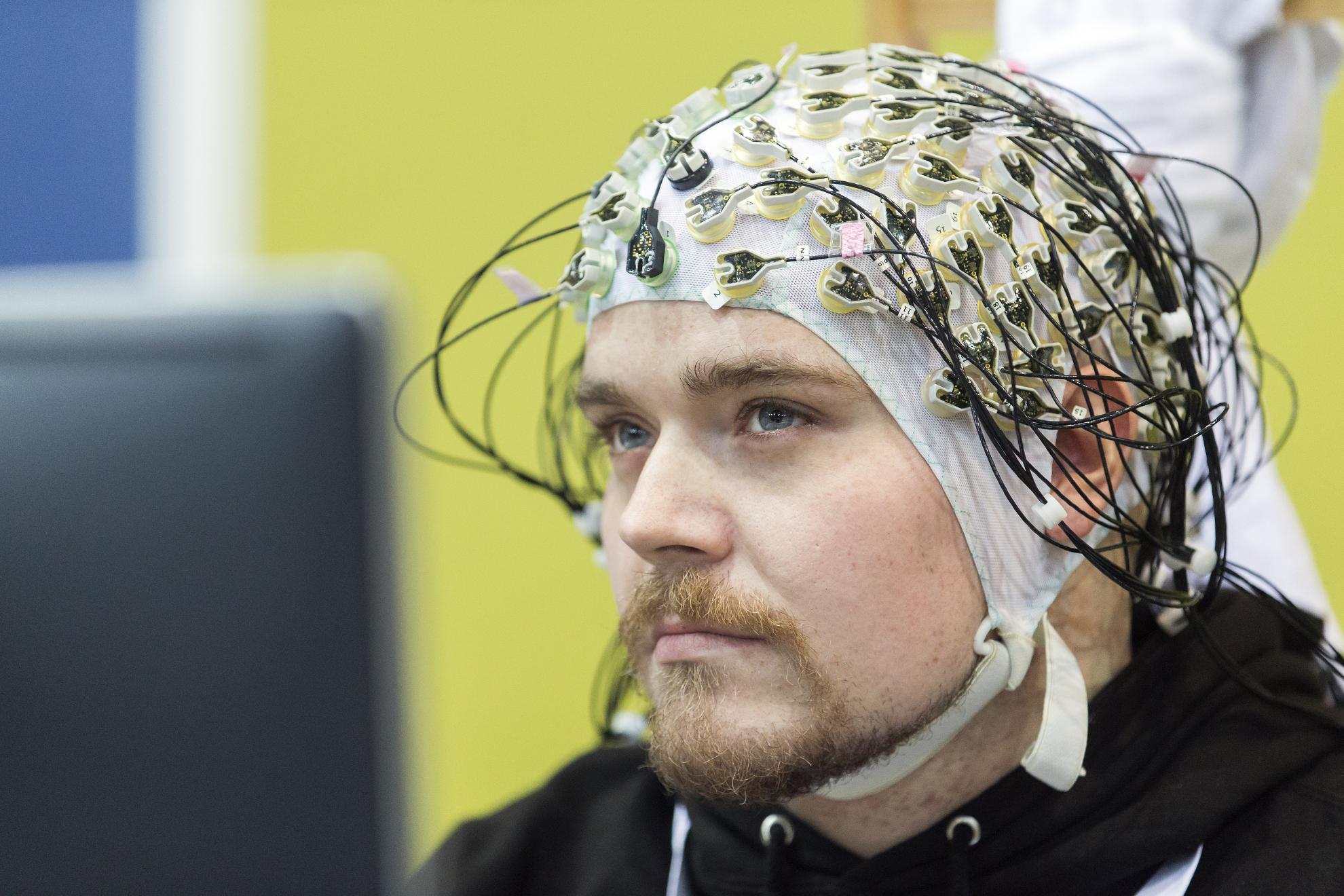
Pilot: Sebastian Reul from Team Athena-Minerva (Greece).
- In this discipline paraplegic pilots use functional electrical stimulation (FES), which enables them to pedal on a recumbent bicycle. It works by placing or implanting electrodes on the person's skin and applying currents to their muscles. This makes their muscles contract to perform a pedalling motion, for example.

Pilot: Julien Jouffroy from the Bernese team IRPT/SPZ from Bern University of Applied Sciences BfH. The team achieved 3rd place in the FES race and is back with the new name 'BfH CybaTrike' and the same pilot in 2020.
- In the powered arm prosthesis race you need fine motor skills, a variety of grips and a sense of touch to be able to slice bread or hang up laundry, for example. This discipline sees pilots who have a prosthetic arm on one or both sides compete against each other, including a new task where objects have to be identified only by using the prosthesis, i.e. without any visual feedback.
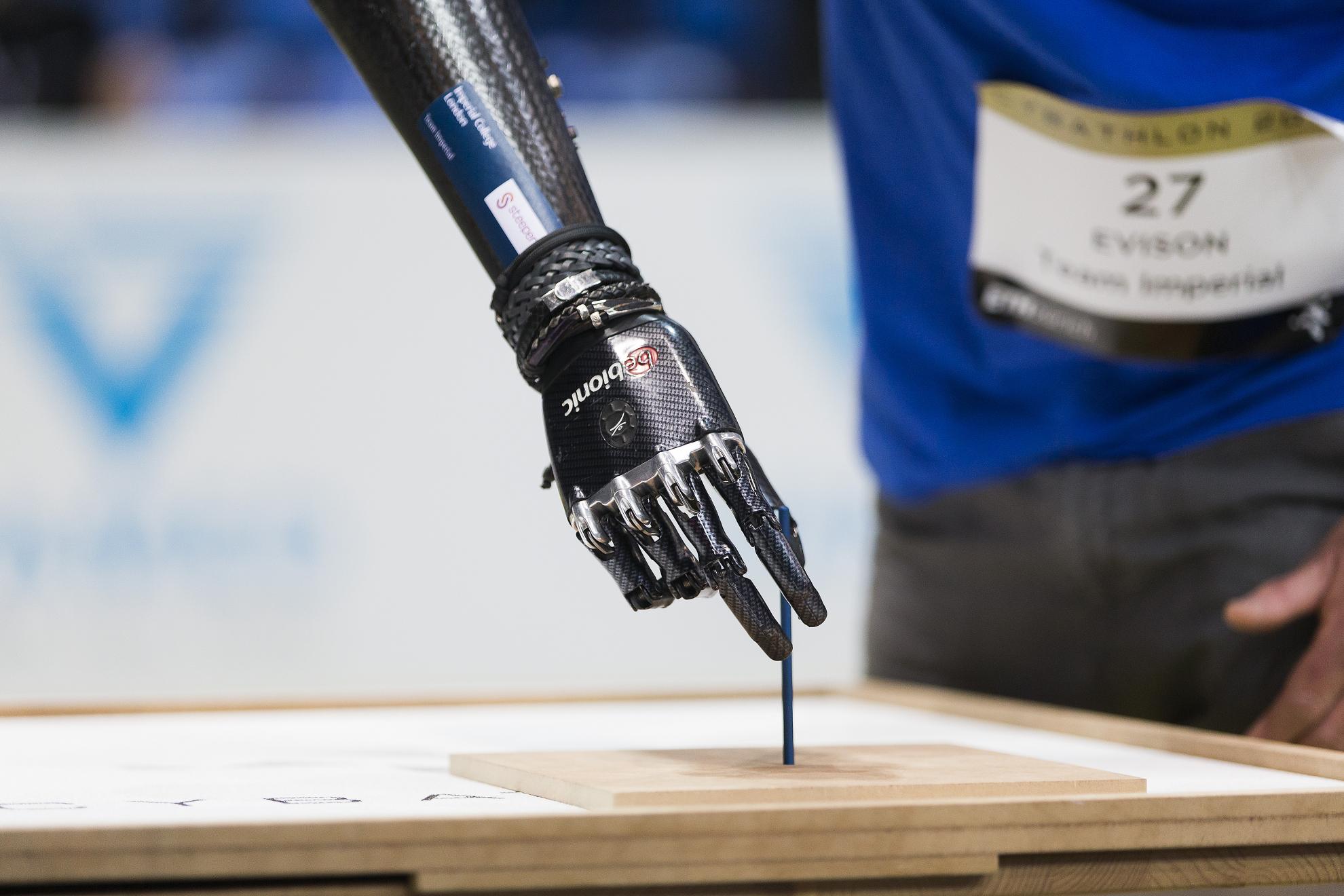
Pilot: Kevin Andrew Evison from Team Imperial (Imperial College, London).
- In the powered leg prosthesis race, pilots test themselves and their prosthetic devices by getting up from a chair or going up and down steps – maintaining their balance while also carrying extra objects.

Pilot: Carlos Felipa Córdova of the PUCP team from the Pontificia Universidad Católica del Perú.
- The powered exoskeleton race is for pilots with complete paralysis of the legs resulting from spinal cord injuries. Tasks include everyday activities such as walking across uneven ground and navigating between furniture.
For the 2020 edition, new activities where the pilots have to use their hands and maintain their balance unassisted have been added.
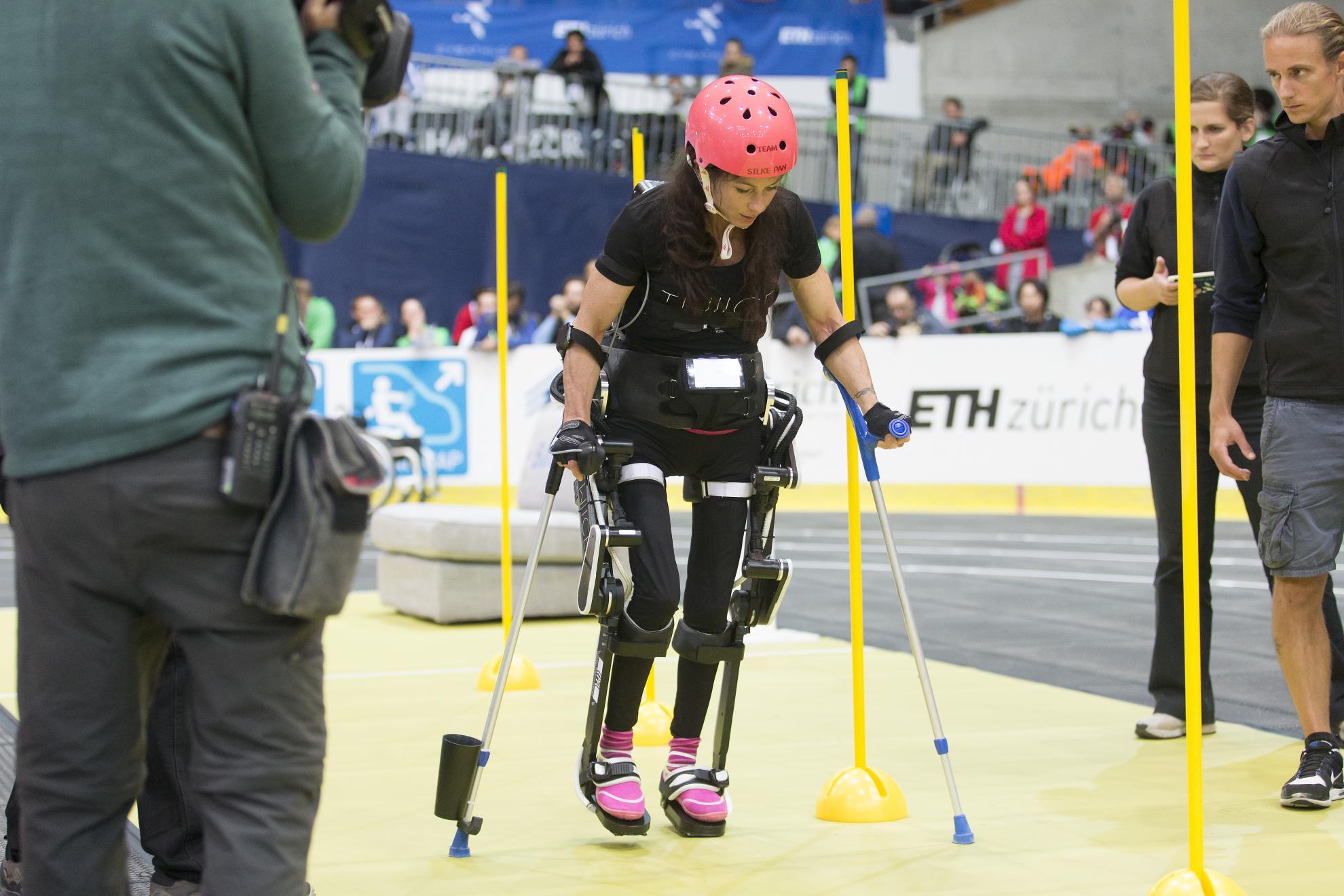
Pilot: Silke Pan of the Swiss team Twiice from EPFL. Also competing in 2020.
- Pilots with a severe walking disability can compete against each other in the powered wheelchair race, which features tasks that require the wheelchair – controlled by a joystick, tongue drive or touchpad – to be manoeuvred in confined spaces or up and down stairs.
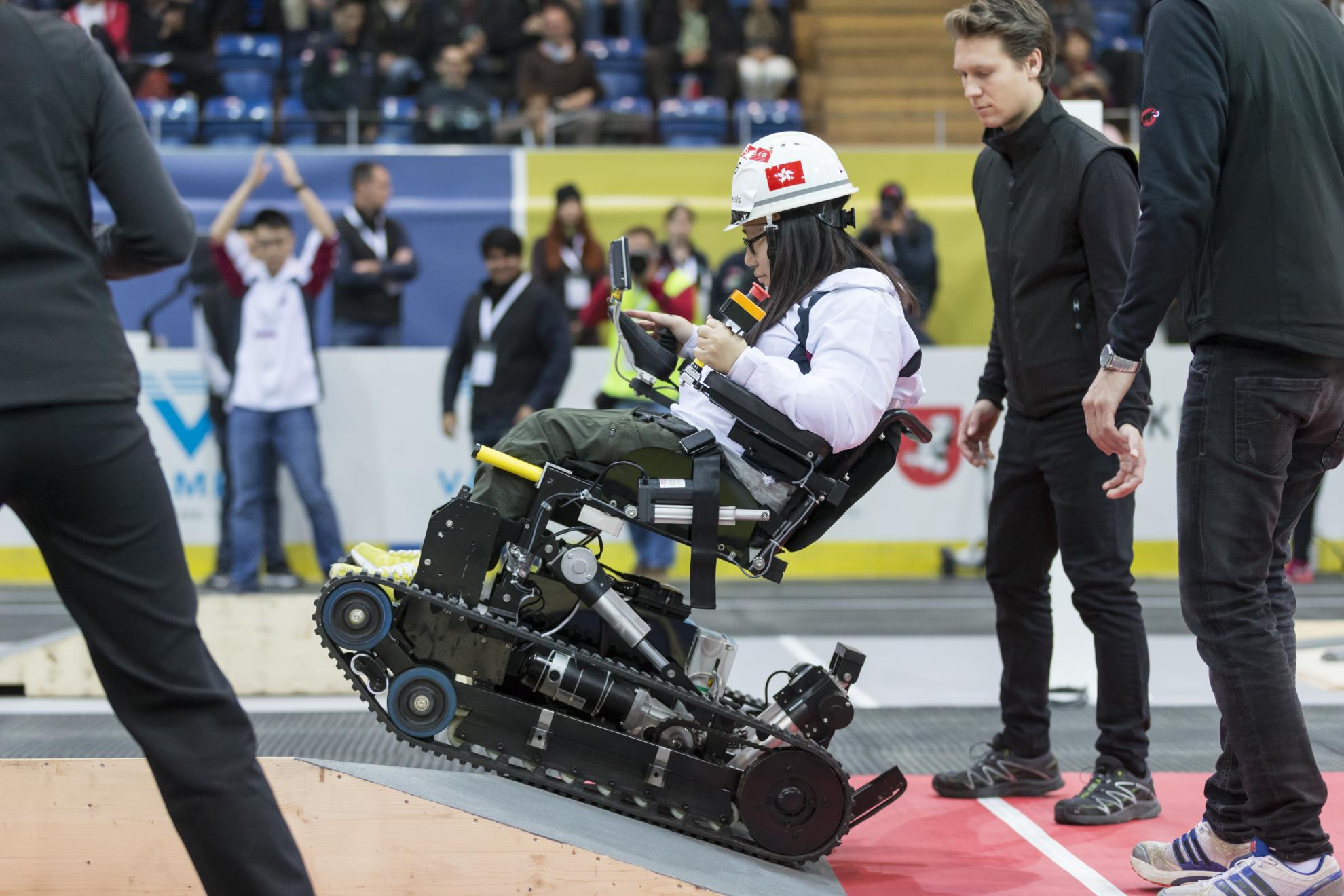
Pilot: Cho Yu Ng of HKUSTwheels from Hong Kong.
Switzerland in the lead
A number of Swiss teams made the podium at the first cybathlon in 2016, including the EPFL team, in a BCI race, and a team from Rapperswil's University of Applied Sciences for the powered wheelchair race, both winning gold.
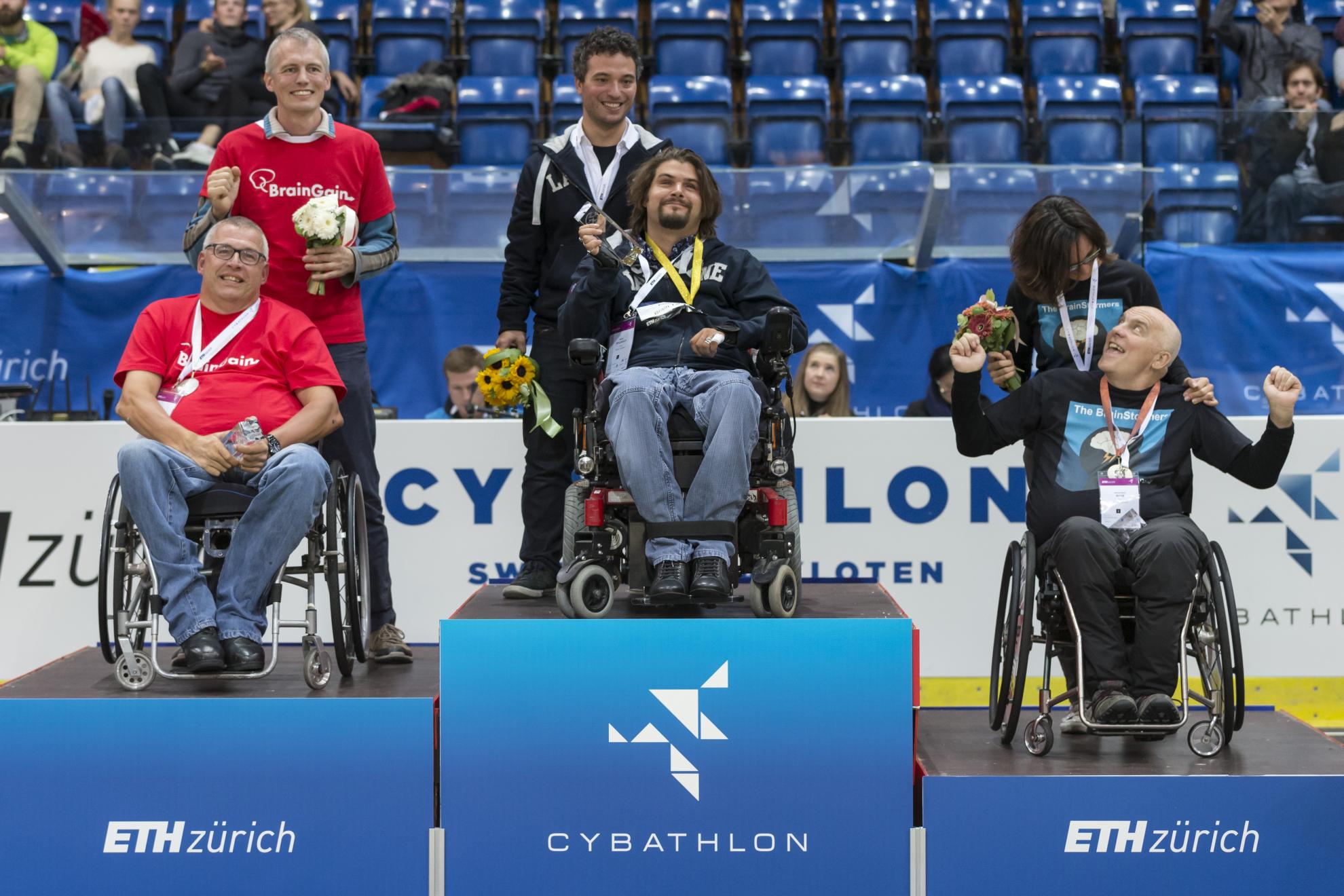
First place: Numa Poujouly from the Swiss team Brain Tweakers (EPFL) Second place: Toine Welling from the Dutch team BrainGain Third place: David Mark Rose from the UK team BrainStormers.
This year again, more than ten teams from Switzerland will be at the starting line of all six disciplines. Like the winning wheelchair team of 2016, whose pilot, Florian Hauser, will be performing at this year's cybathlon once again in his custom-made stair-climbing wheelchair equipped with robotic arm. This year's powered leg prosthesis race will also see three Swiss teams facing off, including one with researchers from ETH Zurich.
Switzerland's BCI team is a collaboration between Nanyang Technological University in Singapore and ETH Zurich. The pilot, Samuel Kunz, has been training hard to drive the virtual car using the BCI technology. In order to turn left, for example, Samuel has to think about moving his left hand. "The training sessions were exhausting," says Samuel, who is a tetraplegic.
Making your body move with only your thoughts is a bit like being trapped in something sticky like honey.
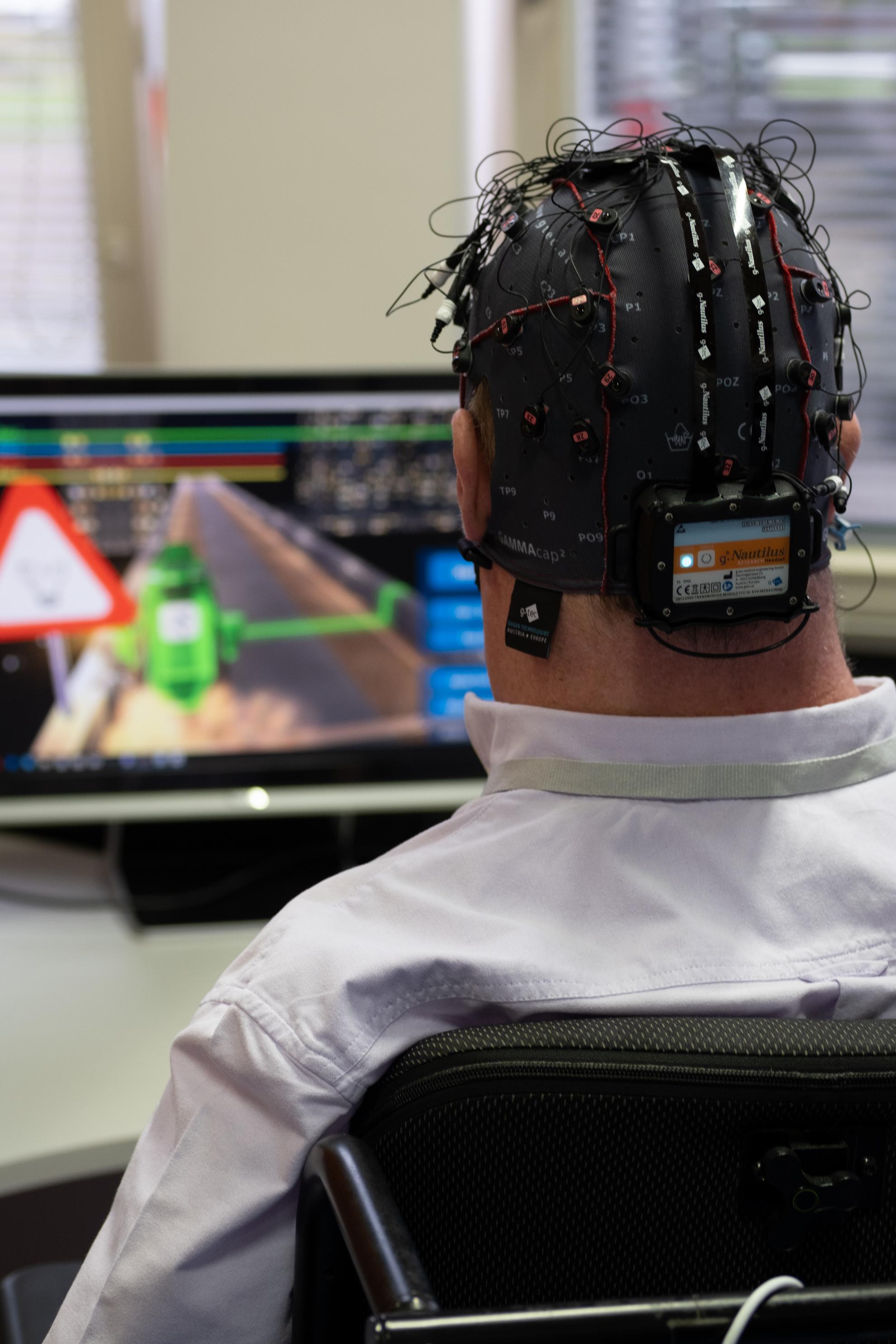
In the game ‘BrainDriver’, pilots steer a virtual car with their thoughts using a brain-computer interface.
A team from Bern's University of Applied Sciences will also be competing against nine international challengers at this year's FES bike race. The team, which won the bronze medal at the 2016 cybathlon, is riding high on its ten years of experience. Team leader Kenneth J. Hunt explains:
We want to develop a bike that's easy to use and affordable.
Since 2016, the team has made significant improvements to the FES recumbent trike, such as automatic transmission. "The trike's centre of gravity is really low, which makes it very stable."
Everyone's a winner
The winner takes it all? Not at the cybathlon, whose organisers insist that everyone taking part is a winner. Why? Because testing cutting-edge prosthetics and other assistive devices for their practicability and user-friendliness benefits everyone concerned. And on top of the successes and findings of the cybathlon, it’s also an event that brings everyone together – people with disabilities, technology developers and the public – which is a crucial step on the way to greater inclusiveness in our everyday lives.
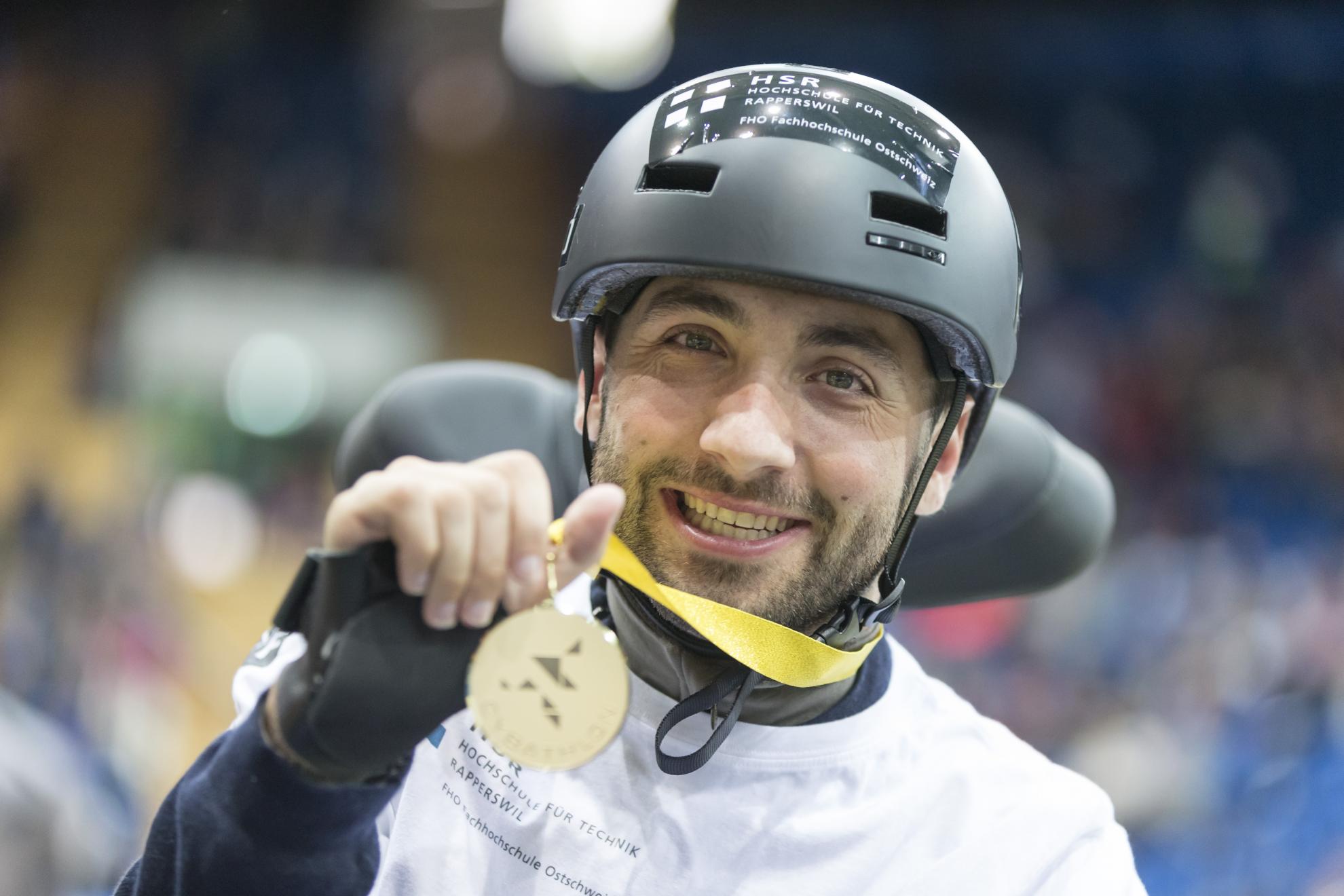
Pilot: Florian Hauser from the Swiss team HSR enhanced (OST and ETH Zurich), winner of the Powered Wheelchair Race in 2016 and competing again in 2020 in the same constellation.
Additional information from the Federal Bureau for the Equality of People with Disabilities:
It isn't just advances in assistive technology that are needed to achieve equality for people with disabilities – all barriers have to be removed, whether structural, social or even psychological. Switzerland has a legal basis for this: the Disability Discrimination Act (DDA), which came into force in 2004. Thanks to this law, Switzerland has made great strides in improving accessibility to public buildings and public transport. For example, there are now 819 fully accessible railway stations (45%) that can be used independently and without prior notification.
Headway is also being made in areas like education, leisure, sport and culture. Because of Switzerland's federal set-up, these improvements are the result of close cooperation at federal, cantonal and communal level, as well as with civil society, the business sector, and the scientific community.
Having ratified the UN's Convention on the Rights of Persons with Disabilities in 2014, Switzerland may now submit regular reports to the corresponding UN committee; however, it will also have to respond to critical questions about those areas in which people with disabilities are still far from equal treatment. In this way, the ratification has improved the visibility and importance of this issue, particularly at federal and cantonal level. In its disability policy report, the Federal Council for the first time set out three priorities for 2018–21: autonomy, equality at work, and e-accessibility. This involves cooperation between all federal departments and cantons, and is coordinated by the Federal Bureau for the Equality of People with Disabilities.


